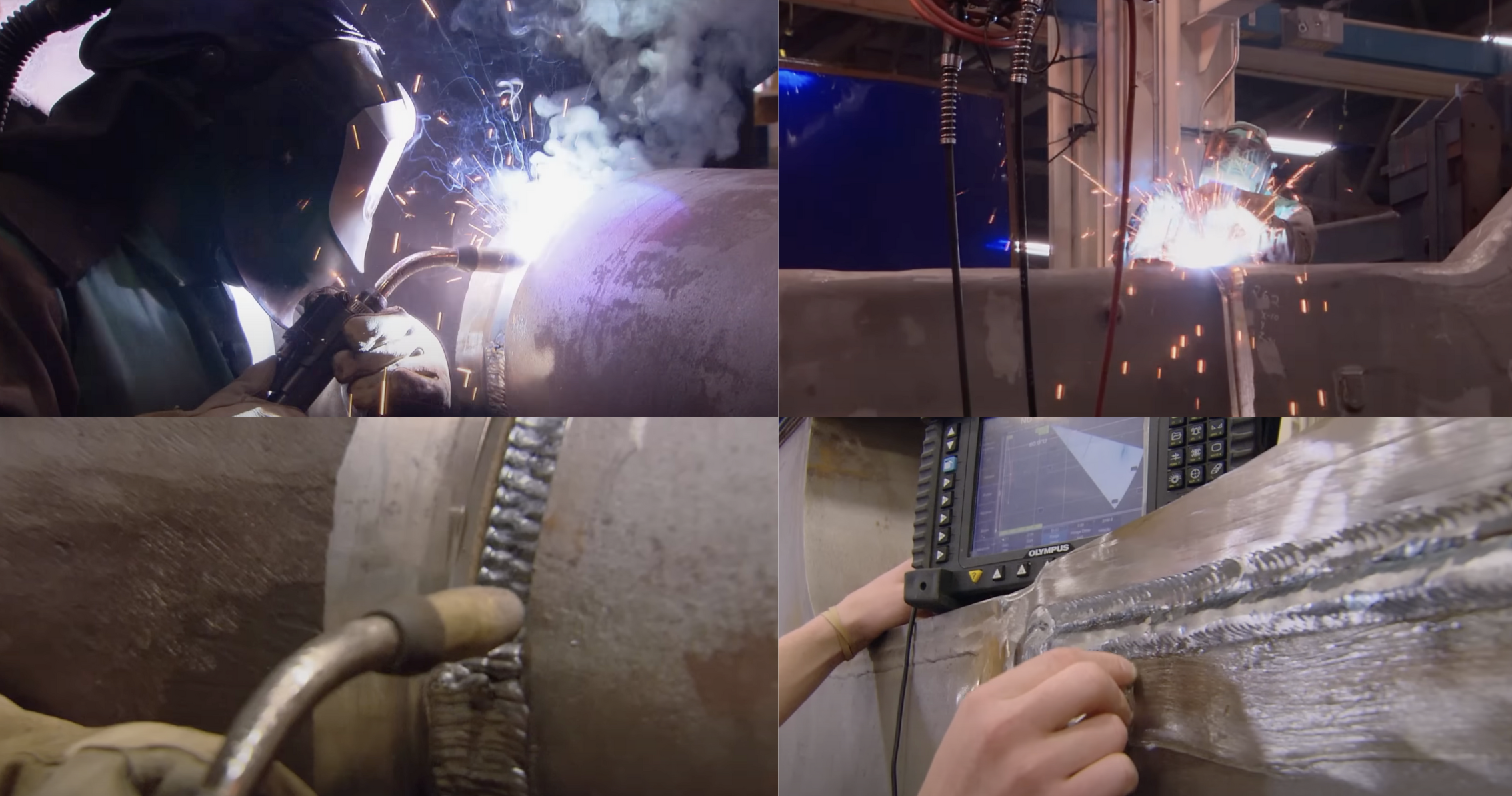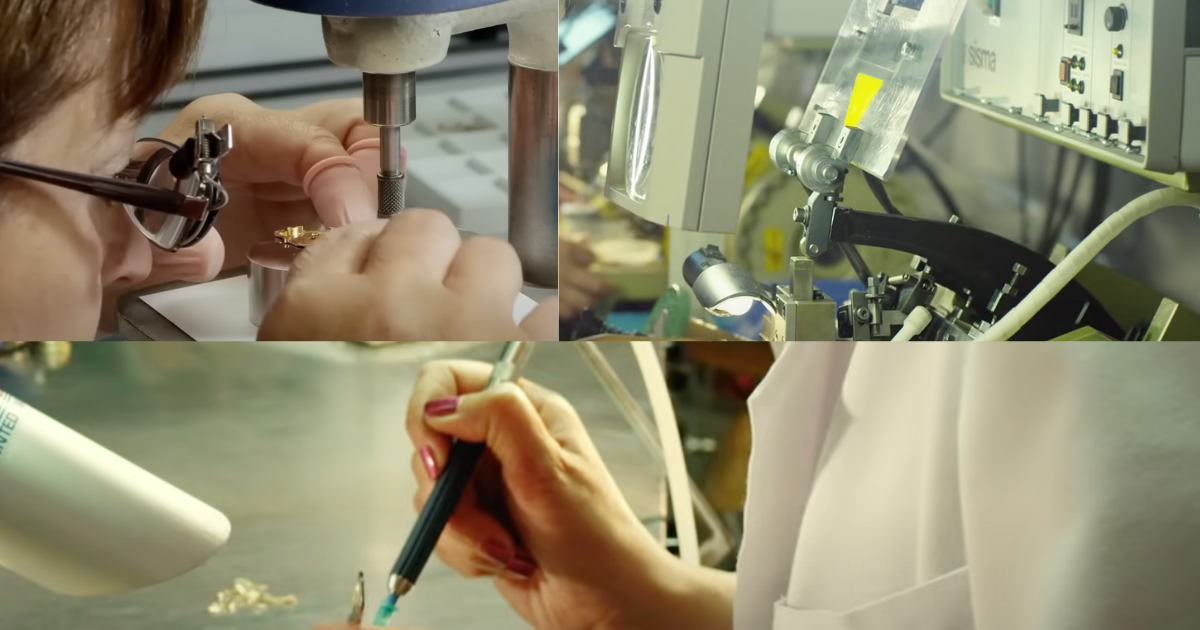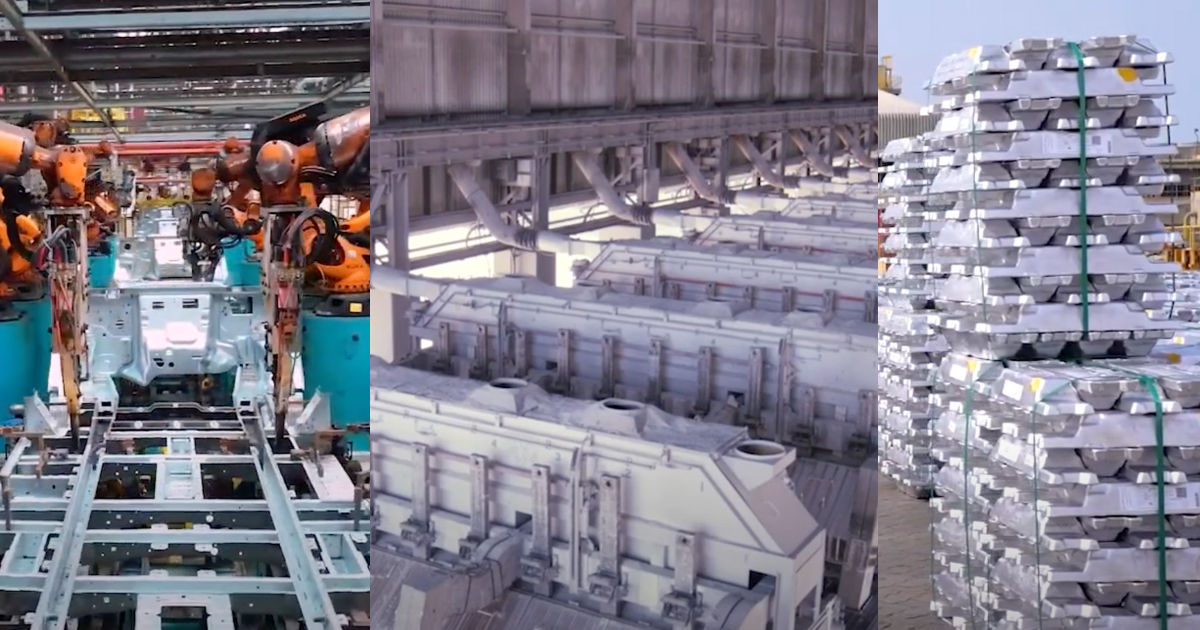
A heavy equipment manufacturer faced persistent near misses during the transition from arc welding to fettling. Standard PPE detection generated noise and frustrated workers, who were flagged even when procedures required temporary removal of gloves or specific equipment. By shifting from blind PPE detection to activity-aware monitoring, integrating workplace state signals, and applying micro sequence checks, the company reduced false positives and improved both safety and comfort. Signal lights indicated whether a zone was active, in maintenance, or inactive, allowing context-sensitive rules to apply automatically. This multi dimensional monitoring respected complex standard operating procedures while ensuring that alerts were both meaningful and actionable. The result was fewer unsafe handoffs, higher operator trust, and improved adherence to safety protocols without forcing workers into uncomfortable PPE at all times.
Heavy equipment manufacturing involves multiple stages of fabrication, welding, machining, fettling, and finishing. Each stage carries its own set of hazards. Arc welding presents risks of burns, electrical shock, and fume exposure, while fettling introduces sparks, flying debris, and repetitive strain. The handoff between these two stages is one of the most delicate points on the shop floor because it combines both residual welding risks and the hazards of grinding and smoothing.
This company had already deployed a tactical monitoring system to enforce personal protective equipment rules. Cameras checked for helmets, gloves, and face shields. Alerts were triggered whenever equipment appeared absent. Initially this approach improved basic adherence, but it quickly revealed limitations.
Workers received alerts even when they were following complex standard operating procedures that required temporary removal of protective gear. For instance, gloves were removed briefly to reposition a fixture or check a weld seam, yet the system flagged this as a violation. Operators grew frustrated, supervisors dismissed the alerts as noise, and real near misses were buried under false positives.
The outcome was predictable. Alert fatigue set in, adherence plateaued, and trust in the system eroded. Tactical monitoring had solved the basic compliance question of “is PPE present,” but it failed to account for the nuances of how work was actually performed. The company needed a monitoring approach that reflected the reality of its operations, not just the appearance of compliance.
The leadership team recognized that the challenge was not negligence but the mismatch between rigid rules and the reality of complex work. Workers were not ignoring safety. They were complying with nuanced standard operating procedures that occasionally required the removal or adjustment of protective gear. What the system interpreted as a violation was often a legitimate step in the process.
The company introduced activity-aware monitoring to address this gap. Instead of relying on simple presence or absence of PPE, the system began to evaluate the visual cues of the operation itself. For arc welding, the monitoring checked for helmets and gloves during ignition and active weld arcs. For fettling, the system focused on face shields, hearing protection, and glove use during grinding. Between these stages, when workers repositioned fixtures or prepared a weld seam for inspection, the system understood that gloves might be removed briefly without triggering an alert.
Micro sequence checks were added to refine this precision. The system tracked the position of hands relative to machines and workpieces. If hands entered hazardous zones during an operation without gloves, an alert was raised. If hands remained outside those zones, glove removal was accepted as part of safe practice. This simple but crucial adjustment eliminated a large volume of false positives and restored operator trust.
The company also realized that the state of the workplace changes frequently. An area can be active during production, temporarily inactive during maintenance, or idle between cycles. Rules that made sense during active welding were irrelevant when machines were powered down for servicing. To solve this, supervisors introduced signal lights connected to the monitoring system. Green indicated inactive, yellow indicated maintenance, and red indicated active operation. The monitoring logic adjusted automatically based on the signal.
By combining activity cues, micro sequence checks, and state awareness, the system shifted from tactical rule enforcement to contextual supervision. Workers no longer felt punished for following correct procedures. Supervisors received alerts that matched the operational reality. And the plant gained a monitoring framework that respected both safety and efficiency.
Within weeks of deploying the new monitoring framework, the difference was visible on the floor. Supervisors noticed that alerts were not only fewer but also more meaningful. Operators stopped dismissing notifications and began engaging with the system as a partner in safety rather than an adversary.
Reduction in false positives
The introduction of activity recognition and micro sequence checks reduced false positives by more than sixty percent. What had previously been flagged as unsafe glove removal was now correctly identified as part of legitimate task flow. Supervisors no longer wasted time reviewing irrelevant clips.
Improved adherence without unnecessary burden
Because workers were not forced to wear uncomfortable protective equipment during moments when it was not required, compliance rose naturally. Operators kept their helmets and gloves on during active welding arcs and grinding operations because they trusted that the system would not penalize them unfairly. Adherence rates improved by more than fifteen percent compared to the previous baseline.
Safer handoffs between processes
The most significant improvement came during the handoff between welding and fettling. Near misses dropped sharply as the monitoring system ensured that operators had the right equipment for the right stage of the job. The combination of workplace state signals and activity-aware rules meant that transitions were smoother, with fewer lapses in protection.
Higher operator trust and acceptance
The change in perception was as important as the quantitative results. Operators described the system as “finally understanding how we really work.” Supervisors reported less pushback and more collaboration. Instead of treating monitoring as surveillance, workers began to see it as a tool that enabled them to perform safely without unnecessary restrictions.
Operational efficiency gains
By eliminating redundant alerts and aligning PPE requirements with actual tasks, production efficiency also improved. Fewer stoppages were triggered by false alarms, and supervisors could focus on meaningful interventions. The system no longer slowed work; it accelerated it by integrating safety checks into the flow of operations.
The overall impact was a plant floor that was safer, more efficient, and more trusted by its workforce. Tactical monitoring had created a baseline of compliance, but contextual monitoring transformed it into a strategic enabler of both safety and productivity.
The heavy equipment case demonstrates that the real breakthrough in safety monitoring does not come from more rules but from smarter context. Leaders who want to replicate these results can draw several lessons.
Lesson one: rules must reflect the reality of work
Binary checks for helmets, gloves, or shields may be easy to implement, but they rarely match the nuanced requirements of complex processes. Monitoring must be anchored in actual task sequences, not just static checklists.
Lesson two: workers respond to fairness
The strongest driver of compliance is trust. When operators believe the system understands their tasks and will not penalize them unfairly, they are more willing to comply. Contextual monitoring turned adversaries into collaborators.
Lesson three: workplace states matter
Operations are dynamic. A welding bay can be active, under maintenance, or idle within a single shift. Applying the same rules across all states creates noise and resistance. Signal lights gave the monitoring system the context it needed to adapt rules in real time.
Lesson four: micro sequence awareness prevents blind spots
Many near misses occur not because PPE is absent in general but because PPE is absent at the wrong moment. By linking hand positions and machine states, the company prevented unsafe exposures without drowning in irrelevant alerts.
Lesson five: culture follows evidence
Supervisors and executives responded to the data. Reduced false positives, improved adherence, and lower near misses created a strong evidence base for further investment. The cultural shift toward acceptance and collaboration followed naturally once the evidence was visible.
Lesson six: integration with broader safety management is key
Pattern monitoring cannot stand alone. Its real value comes when integrated into the company’s broader safety and productivity framework. Evidence from monitoring fed into audits, training sessions, and continuous improvement cycles, making safety a shared responsibility rather than a compliance exercise.
The larger lesson for leaders is clear. Tactical monitoring enforces rules. Strategic monitoring builds trust, adapts to reality, and becomes a lever for continuous improvement. When applied thoughtfully, it can transform both safety outcomes and the culture of the workforce.
The experience of this heavy equipment manufacturer shows how a plant can move from tactical compliance to strategic safety. The shift did not come from adding more alerts or enforcing stricter rules. It came from aligning monitoring with the realities of work and the sequence of operations.
Blind PPE detection had reached its limits. It delivered compliance on paper but created fatigue on the floor. By introducing activity recognition, micro sequence checks, and workplace state signals, the company built a monitoring framework that was both precise and fair. The result was fewer false positives, safer handoffs between welding and fettling, and a workforce that trusted the system instead of resisting it.
The broader impact extended beyond safety. Supervisors gained back time once wasted on irrelevant alerts. Operators felt respected and were more willing to comply. Executives could point to hard evidence of improved adherence and reduced near misses. Together these outcomes reinforced the cultural message that safety and productivity are not competing goals but complementary ones.
For leaders in heavy equipment manufacturing, the call to action is straightforward. Do not stop at tactical monitoring. Take the next step and invest in contextual pattern monitoring that adapts to activity, task sequences, and workplace states. Build systems that mirror the complexity of real operations instead of forcing real operations to conform to simplistic rules.
The path requires iteration and discipline, but the payoff is lasting. A plant floor where workers feel safe without being constrained. A monitoring framework that highlights real risks without drowning in noise. A culture where safety is not a burden but a shared advantage.
This is the future of monitoring in heavy equipment manufacturing: compliance that evolves into trust, alerts that evolve into insights, and tactical enforcement that evolves into a strategic blueprint for resilience.



